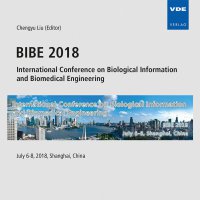Texture analysis and imbalanced data processing for papillary thyroid microcarcinoma detection
Conference: BIBE 2018 - International Conference on Biological Information and Biomedical Engineering
06/06/2018 - 06/08/2018 at Shanghai, China
Proceedings: BIBE 2018
Pages: 4Language: englishTyp: PDF
Personal VDE Members are entitled to a 10% discount on this title
Authors:
Wei, Fengqin; Ding, Jianrui; Zhang, Yingtao (School of Computer Science and Technology, Harbin Institute of Technology, Weihai, Shandong, China)
Ning, Chunping (Ultrasound Department, The Affiliated Hospital of Qingdao University, Qingdao, Shandong, China)
Xu, Fei (Department of Computer Science, Utah State University, Logan, UT, USA)
Xian, Min (Department of Computer Science, University of Idaho, Idaho Falls, ID, USA)
Abstract:
Papillary thyroid microcarcinoma (PTMC) is a group of malignant cancers with a quite high incidence. Most of them coexist with benign nodules, so the differential diagnosis was difficult. The purpose of this study was to investigate whether texture analysis is helpful to differentiate the papillary thyroid microcarcinoma (PTMC) from benign thyroid nodules by ultrasonography and how to deal with the imbalanced data. Totally, 2046 (404 benign and 1642 malignant) nodules were included in this study. Ultrasound texture features that were analysed include histogram, grey level co-occurrence matrix (GLCM), local binary pattern (LBP) and local binary pattern variance (LBPV) features, which were extracted from region of interest (ROI). Furthermore, Synthetic Minority Over-sampling Technique (SMOTE) algorithm was adopted to improve the imbalanced datasets. Finally, the support vector machine (SVM) was employed to train and classify the data. The experimental results showed that with the SMOTE, LBPV features achieved better performance than other features. The study demonstrated that texture features of sonography were useful in predicting the PTMC and imbalanced dataset can be processed well with SMOTE.


